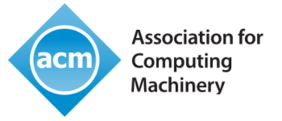Article accepted for publication in the ACM “Transactions on Autonomous and Adaptive Systems” journal
05/15/2017An article co-authored by Jóakim von Kistowski, Nikolas Herbst, Prof. Dr. Samuel Kounev, and researchers from KIT and the University of Paderborn has been accepted for publication in the ACM Transactions on Autonomous and Adaptive Systems (TAAS) journal. The article is entitled "Modeling and Extracting Load Intensity Profiles".
The article results from the ongoing reasearch and development based on the LIMBO tool. ACM TAAS a venue for high-quality research contributions addressing foundational, engineering, and technological aspects related to complex autonomous systems. The journal has had an impact factor of 1.118 in 2015/16.
Jóakim von Kistowski, Nikolas Herbst, Samuel Kounev, Henning Groenda, Christian Stier, and Sebastian Lehrig. Modeling and Extracting Load Intensity Profiles. ACM Transactions on Autonomous and Adaptive Systems (TAAS), 11(4):23:1--23:28, January 2017, ACM, New York, NY, USA. [ DOI | http ]
The LIMBO tool, which features the implementation of the methods described in the paper, can be found at http://descartes.tools/limbo
Abstract:
Today's system developers and operators face the challenge of creating software systems that make efficient use of dynamically allocated resources under highly variable and dynamic load profiles, while at the same time delivering reliable performance. Autonomic controllers, e.g., an advanced auto-scaling mechanism in a cloud computing context, can benefit from an abstracted load model as knowledge to reconfigure on time and precisely. Existing workload characterization approaches have limited support to capture variations the inter-arrival times of incoming work units over time (i.e., a variable load profile). For example, industrial and scientific benchmarks support constant or stepwise increasing load, or inter-arrival times defined by statistical distributions or recorded traces. These options show shortcomings either in representative character of load variation patterns or in abstraction and flexibility of their format. In this article, we present the Descartes Load Intensity Model (DLIM) approach addressing these issues. DLIM provides a modeling formalism for describing load intensity variations over time. A DLIM instance is a compact formal description of a load intensity trace. DLIM-based tools provide features for benchmarking, performance and recorded load intensity trace analysis. As manually obtaining and maintaining DLIM instances becomes time consuming, we contribute three automated extraction methods and devised metrics for comparison and method selection. We discuss how these features are used to enhance system management approaches for adaptations during run-time, and how they are integrated into simulation contexts and enable benchmarking of elastic or adaptive behavior. We show that automatically extracted DLIM instances exhibit an average modeling error of 15.2\% over ten different real-world traces that cover between two weeks and seven months. These results underline DLIM model expressiveness. In terms of accuracy and processing speed, our proposed extraction methods for the descriptive models are comparable to existing time series decomposition methods. Additionally, we illustrate DLIM applicability by outlining approaches of workload modeling in systems engineering that employ or rely on our proposed load intensity modeling formalism.



